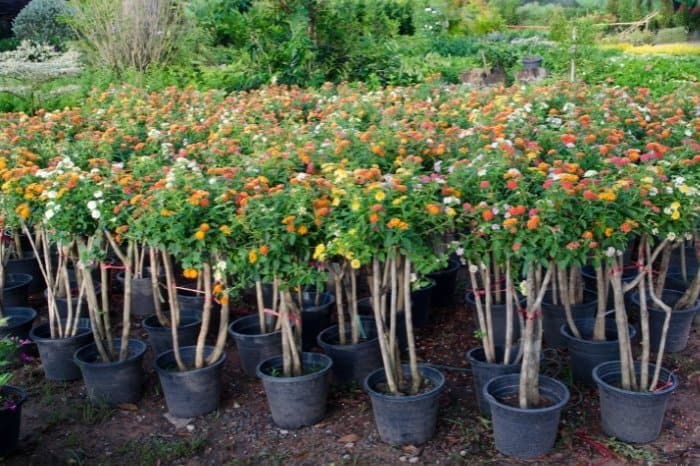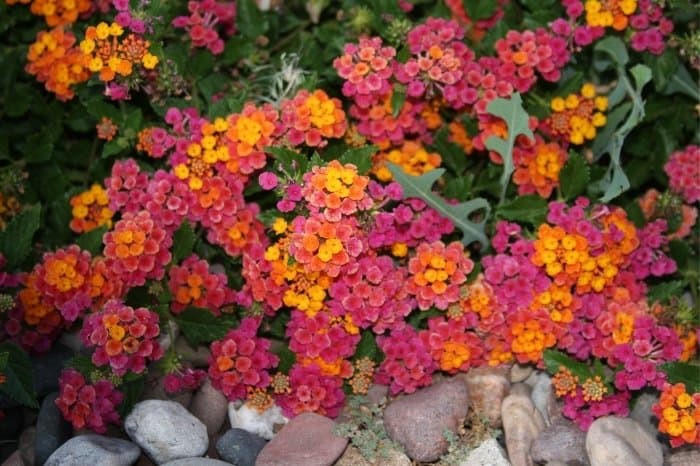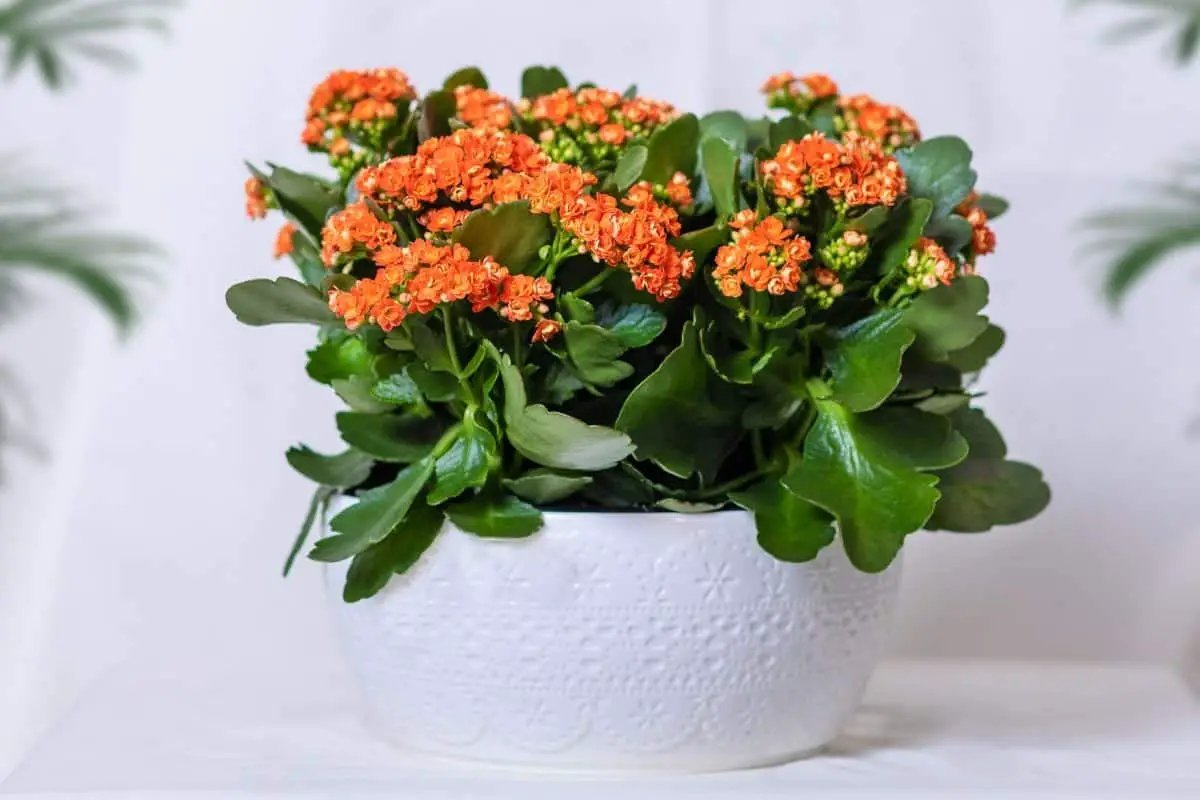Last Updated on August 23, 2022 by Griselda M.
Growing lantana in pots is becoming popular, with more gardeners opting to grow these flowers indoors or even indoors for that striking look.
Lantana is an irresistible plant with a sweet fragrance and bright blooms, attracting a dozen butterflies and bees to your garden. These famous clusters of flowers are one of the best plants to grow if you want a great display of colors.
These flowers are suitable for growing both indoors and outdoors. They also require less attention and thrive all year round in USDA zones 8 to 11. Potted lantana allows gardeners to enjoy cooler climates during the hot season.
Types Of Lantana Growing in Pots
It is possible to grow any lantana in a container but keep in mind some are very large, reaching up to 6 feet. These fruits need a sturdy container, as they are heavy.
Dwarf varieties are suitable for standard-sized containers, reaching a height of about 12 to 16 inches. They are available in a range of beautiful bright colors.

Popular choices for potted lantanas include Denholm White, Chapel Hill, Patriot, Pinkie, Weeping White, and Weeping Lavender are vine-like plants ideal for containers or hanging baskets. Trailing lantana, available in purple or white varieties, is a species that reaches 8 to 14 inches but spreads wide to 4 feet or more. All these varieties are great for growing in pots.
Let’s Learn How Growing Lantana in Pots Works
Growing lantana in pots is easy but must be prepared for in advance. Let’s see what you ought to prepare.
Step 1: Select your Lantana
You will have already taken this step before even preparing your pot. Before even preparing your pot, select the type of lantana you want to grow. Choose between the dwarf and the standard variety. Lantana Camara is an upright cultivar that grows up to 18 inches tall. Trailing lantana grows up to 1 to 2 feet in length and thrives in containers. From this collection, choose your favorite cultivar to increase.
Step 2: Design your flower garden
Design your pot flower gardens on paper before you can place them outdoors or indoors. Place the tallest plants in the back, medium plants in the center, and shorter ones in the front. You can also set the tallest plant in the center and surround them with medium plants on all sides and the shortest plants at the edges. If possible, mix and match plants so that the colors can have a pattern-like effect.
Step 3: Prepare the container
Select an area that has full sun and place your planting pot there. Ensure your container has enough draining holes because this flower likes well-drained soil to flourish. If your container has no drainage holes, pound a nail into the bottom of the container to make some using a hammer and a nail. Create holes that are 6 inches apart.
Step 4: Prepare the potting mix
Use professional-grade potting mix and not the normal soil as it tends to be too heavy to drain well in the pot. Pour a good amount of this potting mix into the container up to about 4 inches from the top. Spread the potting mix using a hand shovel so that it’s appropriately leveled.
Step 5: Plant your Lantana
Plant your lantana in the container already filled halfway with your potting mix. You can add a handful of sand, perlite, or vermiculite to enhance drainage. Firmly but gently, press your plant in the mixture.
Step 6: Watering
Water your plants well and keep them evenly moist in the days that follow. Don’t overwater your plant; you risk killing it.
Caring For Growing Lantana in Pots
Lantanas plants care easy compared to other types of flowers that need a lot of it.
- Watering. Lantana is a drought-tolerant plant once established. You will only need to water it once per week. Don’t wet the leaves or the flowers as you water to prevent mold and mildew from forming. Also, don’t overwater your plant as you risk killing it. During summer or when the plant is young, water it regularly.
- Fertilizing. Lantanas thrive in rich soils but do require feeding to do well. To boost your plant’s growth, fertilize it every 2 or 3 months with a 20-20-20 feed. Do not overfeed your plant, as it will give more foliage than flowers.
J R Peters 52024 Jacks Classic No.1.5 20-20-20 All Purpose Fertilizer
- Deadheading. Removing the spent flowers immediately from the stalk to encourage more blooming. This will not allow the plant to divert its energy to setting seeds early, thus shortening the flowering period.
- Pruning. Pruning lantanas promotes dense flower growth. Pinch off new shoots with your fingers to encourage more branches and lush growth. Also, cut off long and dead branches from time to time using a pair of scissors to promote new growth.
- Overwintering. Lantana is a tropical plant. In colder climates, it does not overwinter on the ground, but it does so in pots – this is the advantage of growing it in pots. Before winter starts, trim your plant at least 1/3 or even ½ and move it inside a warm place that has a temperature of about 50 degrees F.
- Pests and Diseases. Lantana is resistant to many infections, but it can be attacked by aphids, mealybugs, and spider mites. This only happens when you grow lantana in poor conditions. Use insecticidal soap to eliminate pests, or use a method that removes only the insect without infecting your plants.

Lantanas care is straightforward for every gardener to get it done with ease.
Final Thoughts
Growing lantana in pots is more manageable than growing them in the ground, as you can grow them as perennials. This plant is exceptionally fast-growing, hard to kill, and does quite well in full sun. This makes lantana an excellent ground cover reaching about 10 to 14 inches in height and has tiny flowers. They are best grown in raised beds or containers to keep their spreading in check.
Warning: Lantana leaves and berries contains a toxic component known as triterpenoids that can be lethal. Even when indoors, keep the plant away from pets and children. In ingestion, symptoms to watch out for are mouth irritation, diarrhea, abdominal pain, and constipation.
Caroline is a gardener who loves to get down to the nitty–gritty of gardening. She proudly proclaims herself as a ‘dirt worshipper‘ and can often be found deep in the garden, covered in soil and singing to her plants. As a self–proclaimed ‘plant whisperer‘, Caroline believes that plants need love and attention just like any other living thing, and she loves to give them both. When she‘s not tending to her garden, you can often find her researching the latest gardening trends, or teaching others how to make their gardens thrive



